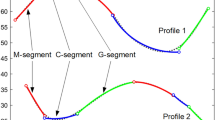Abstract
IN their interesting letter in Nature1 on statistical methods in anthropology, Dr. J. Bronowski and Mr. W. M. Long suggest that the reason why Prof. Zuckerman's findings were at odds with those based on classical comparisons was that he had compared each measurement separately instead of using the comprehensive test provided by the discriminant function. They took as an example the discriminant function calculated from measurements on forty human and forty-four chimpanzee lower milk canines. This gave a wide separation in the ranges of the two groups and conclusively indicated (a) that the Kromdraai and Taungs milk canines are not those of chimpanzees and (b) that they fall within the human range.
This is a preview of subscription content, access via your institution
Access options
Subscribe to this journal
Receive 51 print issues and online access
$199.00 per year
only $3.90 per issue
Buy this article
- Purchase on Springer Link
- Instant access to full article PDF
Prices may be subject to local taxes which are calculated during checkout
Similar content being viewed by others
References
Bronowski, J., and Long, W. M., Nature, 168, 794 (1951).
Le Gros Clark, W. E., Nature, 166, 791 (1950).
Ashton, E. H., and Zuckerman, S., Phil. Trans. Roy. Soc., B, 234, 471 and 485 (1950).
Barnard, M. M., Ann. Eugen., 6, 352 (1935).
Author information
Authors and Affiliations
Rights and permissions
About this article
Cite this article
YATES, F., HEALY, M. Statistical Methods in Anthropology. Nature 168, 1116–1117 (1951). https://doi.org/10.1038/1681116a0
Issue Date:
DOI: https://doi.org/10.1038/1681116a0
This article is cited by
-
Overall Dental Dimensions of Hominoids
Nature (1952)
Comments
By submitting a comment you agree to abide by our Terms and Community Guidelines. If you find something abusive or that does not comply with our terms or guidelines please flag it as inappropriate.



